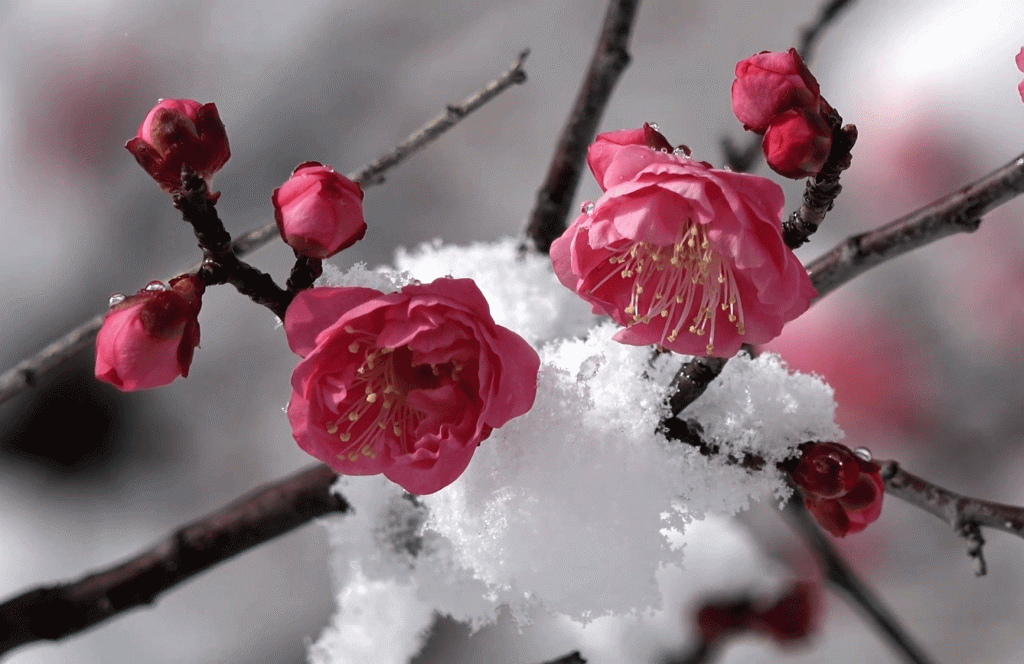
“In this calm and peaceful spring sun, the flowers are falling without calm mind”
It is a famous Tanka poetry by Ki no Tomonori, which was selected in the collection of Japanese poems “Kokin Wakashū” in the early Heian period. Needless to say, the “flowers” that appear here are cherry blossoms. In the Heian period, flowers meant cherry blossoms. This hasn’t changed since then. However, the era of “Manyoshu” was the era of plum blossoms rather than cherry blossoms. The number of plums selected in “Manyoshu” shows its popularity. There are 43 songs about cherry blossoms, but 110 songs about plum blossoms. Plums are more than double the number of cherry blossoms. It was in the Heian period that it was reversed. In the “Kokin Wakashū” created in the early Heian period, there are about 18 songs about plum blossoms but 70 songs about cherry blossoms. The gorgeous cherry blossoms reflect the times against the plain plums. After that, Sakura had a great influence on the spiritual formation of the Japanese people.
「久方の ひかりのどけき春の日に しづ心なく 花の散るらむ」
平安時代初期の勅撰和歌集『古今和歌集』に撰集された紀友則の有名な歌です。ここに出てくる「花」は言わずもがな桜の花です。平安時代には花と言えば桜の花を意味していました。爾来今に至るまでこれは変わりません。しかし、『万葉集』の時代は桜より梅の時代でした。その人気ぶりをうかがえるのが、『万葉集』に詠まれた梅の数です。桜を詠んだ歌は43首に対し、梅を詠んだ歌は110首。梅は桜の倍以上詠まれているのです。それが逆転したのが平安時代です。平安初期に作成された『古今和歌集』には、梅を詠んだ歌は18首程度に対し、桜を詠んだ歌は70首となっています。地味な梅に対して華やかな桜が時代を反映した訳ですね。そしてその後、桜は日本人の精神形成に大きな影響を与えました。
